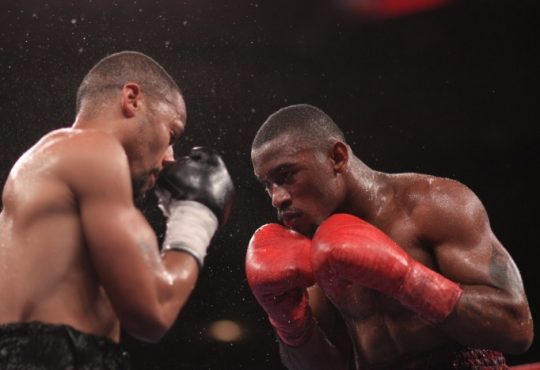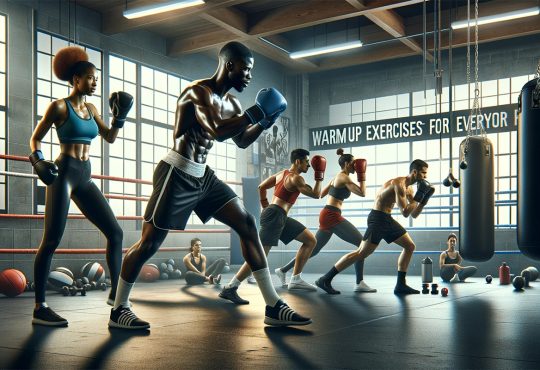
Is Boxing Good For Self Defense? – Boxing Guides
You ever notice how everyone’s talking about self-defense lately? Whether it’s late-night news stories or just that uneasy feeling walking to your car after dark—yeah, it’s out there. And with all the buzz around martial arts, I keep hearing one question over and over: “Is boxing actually useful in a real fight?”
Now, I’ve trained in a few striking disciplines over the years, but boxing? That’s the one I keep coming back to. It sharpens your reflexes, boosts your reaction time, and honestly—it teaches you how to move when things get chaotic.
So in this piece, we’re digging into what really matters: Can boxing help you protect yourself? Is it actually good for street-level self-defense? Let’s break it down.
What Is Boxing?
Boxing, at its core, is a striking-based combat sport built around timing, precision, and movement. It’s not just about throwing punches—though, trust me, that’s part of it—it’s about learning how to read your opponent, control distance, and use your body efficiently.
I’ve been training and coaching boxing for over a decade now, and if there’s one thing I’ve learned, it’s this: the fundamentals win fights. Whether you’re in a ring or in a gym trying to sharpen your reflexes, it all starts with mastering the basics. Here’s what I always drill into beginners:
- Boxing Stance: Think balance over power. A proper stance gives you mobility and protection. (If your feet are too wide or too close? You’re toast.)
- The Jab: This isn’t just a feeler—it sets up everything. Defense, offense, measuring distance… it’s your best friend in the ring.
- Footwork: Probably the most overlooked skill. Great footwork makes average fighters dangerous. Poor footwork? Well, you’re stuck eating punches.
- The Cross: Clean, direct, and when timed right—it can end a round fast. I always say it’s the “truth-teller” of your technique.
- Basic Combinations: Jab-cross. Jab-jab-cross. Jab-body-jab. These drills build muscle memory and rhythm. (Don’t skip them—they look simple, but they work.)
What I’ve found is, boxing rewards discipline and repetition. It’s not flashy until it is—and when it is, it’s beautiful.

What Makes a Martial Art Good for Self-Defense?
If there’s one question I hear more than “Can boxing help in a street fight?”—it’s this one. And honestly, it’s a good question. The truth? Not all martial arts are built for real-world chaos. In my experience coaching boxers and training with people from all kinds of backgrounds, the best self-defense systems all share a few core traits.
- Simplicity under stress: You won’t remember a 10-step wrist lock when someone grabs you out of nowhere. What you will remember is how to move, strike, and create space.
- Pressure-tested techniques: Styles that actually spar—boxing, Muay Thai, BJJ—force you to perform under pressure. That builds real reflexes, not just muscle memory.
- Adaptability: Real fights are unpredictable. The ability to adjust on the fly is way more important than having a “perfect form.”
- Control and restraint: Not everything needs to end in a knockout. De-escalation, verbal assertiveness, and knowing when not to throw a punch? Hugely underrated.
- Situational awareness: This isn’t taught enough, but recognizing danger before it escalates? That’s half the battle. Probably more.
What I’ve found is that the most practical martial arts for self-defense train your brain as much as your body. They prepare you for real life—not just the dojo.
Boxing’s Strengths in Self Defense
I’ve always said—if you had to pick one striking art for real-life self-defense, boxing’s a strong contender. It’s raw, it’s tested, and what you build in the ring actually translates when things get messy outside it. I’ve seen it happen. I’ve felt it happen.
What makes boxing so effective on the street?
- Fast, accurate hands: Speed kills. A clean jab or counter cross can change someone’s mind real fast (sometimes before they even realize they picked the wrong target).
- Head movement and angles: Slipping a punch in a gym is one thing—but being able to instinctively move your head without thinking in real life? That’s a game-changer.
- Footwork and distance control: You learn to move with purpose. Not just dancing around, but managing space so you’re never cornered or flat-footed.
- Conditioning and composure: Fights spike adrenaline. What I’ve found is boxers stay calm longer—they’ve trained through chaos.
- Timing and reflexes: Boxing sharpens your eyes. You start seeing punches before they land, and that’s priceless when there’s no ref to stop the action.
Here’s the thing: real fights are fast, dirty, unpredictable. But a solid boxing base gives you the reflexes and mindset to handle that storm—and walk away intact.

Limitations of Boxing in Self Defense
Now, I love boxing—been around it most of my life, and I’ll defend its value all day. But let’s be real: when it comes to self-defense, boxing has blind spots. And ignoring them can get you in trouble.
I’ve had conversations with students who thought a slick jab and good head movement were all they needed in a street fight. Spoiler: they’re not. Here’s where boxing starts to fall short:
- No grappling or takedown defense: If someone grabs you and pulls you to the ground, boxing gives you nothing to work with. It’s a stand-up game—period.
- No clinch control: In the ring, the ref breaks clinches. In real life? You’re stuck in that chaos unless you know how to work from inside.
- Zero ground fighting: Once you’re on the floor, all that punching skill means very little. You’re playing someone else’s game at that point.
- Limited by range and ruleset: Boxing thrives in striking range. But what if someone charges you, tackles you, or pulls a weapon? That’s not something a gym drill usually preps you for.
- No training in de-escalation or situational awareness: Boxing teaches you how to fight—not how to avoid one.
What I’ve found is, boxing works best in combination with other skills—like wrestling or BJJ—or at least a basic understanding of how to stay on your feet. It’s a sharp tool, but not a full toolbox.
Boxing vs Other Martial Arts for Self-Defense
I’ve had countless conversations in gyms and locker rooms that start with, “Yeah, but what if it goes to the ground?” And fair enough—because no single style is perfect. As a boxing coach who’s cross-trained in other systems over the years, here’s how I break it down when folks ask about boxing versus other martial arts for self-defense.
- Boxing
✔️ Fast hands, solid defense, unmatched footwork.
❌ No grappling or ground control.
(Great for striking, but if it hits the ground, you’re in unfamiliar territory.) - Muay Thai
✔️ Brutal clinch work, elbows, knees—excellent in close.
❌ Less mobility and footwork finesse compared to boxing.
(I respect Muay Thai fighters—they’re tough. But the movement’s heavier.) - MMA
✔️ Well-rounded: striking + takedowns + submissions.
❌ Complexity. It’s hard to master it all unless you’re in it full-time.
(MMA guys can do it all, but you better have serious mat time.) - Brazilian Jiu-Jitsu (BJJ)
✔️ Submissions, positional control, especially on the ground.
❌ Limited striking; risky if multiple attackers are involved.
(I’ve trained BJJ—I love it. But on the street? You don’t always want to go to the ground.) - Krav Maga
✔️ Designed for street defense; quick, dirty, straight to the point.
❌ Can lack live sparring, depending on the school.
(I’ve seen effective Krav… and some sketchy stuff too. The pressure-testing matters.)
What I’ve found? Boxing gives you quick reactions, killer instincts, and that confidence to move in or out of trouble. But if you’ve got time, mix it with something that covers clinch or ground—because real life doesn’t follow weight classes or rules.
Real-World Scenarios Where Boxing Helped
You never really know how you’ll react in a real fight—until it happens. I’ve seen trained boxers handle situations that could’ve gone sideways fast, and honestly, that calm under pressure? It makes all the difference.
Here are a few real-world cases that stuck with me:
- Late-night bar parking lot, Chicago: One of my former students—mid-30s, solid amateur background—got cornered by a guy swinging wild. He slipped two punches, fired a clean counter hook, and ended the threat in under five seconds. No excessive force, no dragging it out. Just sharp boxing instincts and solid footwork.
- Gas station confrontation, Florida: This one’s on camera. A guy trained in boxing defended himself when a stranger aggressively rushed him. You can see him set his stance, maintain distance, and use quick jabs to control space until the attacker backed off. No knockout, no brawl—just controlled movement and smart decision-making.
- Personal story from a gym buddy: He got jumped years ago on the way home from work—two guys. He didn’t try to outfight them. Instead, he used angles, stayed on his feet, and managed to get out. What he told me later? “Boxing didn’t make me a hero. It just helped me not freeze.”
What I’ve found is, it’s not about looking tough—it’s about giving yourself time to think. Boxing trains your reaction time, balance, and control when adrenaline’s surging and everything feels like it’s moving too fast.
Should You Learn Boxing for Self-Defense?
If you’re thinking about picking up boxing for self-defense, you’re not alone—it’s a question I’ve been asked more times than I can count. And look, after years in the gym (and a few unfortunate street run-ins), I can confidently say: yes—but it depends on you.
Boxing is incredibly effective if you’re willing to show up, sweat, and commit to the process. Here’s what I’ve seen firsthand:
- Pros:
✔️ Builds real striking ability—fast hands, solid footwork, strong timing.
✔️ Sharpens reflexes and awareness under pressure.
✔️ Boosts fitness and mental toughness (way more than people expect).
✔️ Sparring develops realistic fight instincts—that transfers to real life. - Cons:
❌ No ground game—if it goes to the floor, you’re out of your element.
❌ Learning curve can feel steep, especially if you’re not used to full-contact.
❌ Not all boxing gyms focus on self-defense—you’ll need the right coach.
What I’ve found? Boxing suits people who want a no-BS, practical skillset and aren’t afraid of a little discomfort. Combine it with some clinch or grappling work, and you’ve got a seriously effective self-defense toolkit.
Find a solid gym near you, talk to the coach, and just try a class. You’ll know within 10 minutes if it’s the right fit.
How to Combine Boxing With Other Self-Defense Skills
Boxing gave me the sharpest hands and footwork of my life—but the longer I trained, the more I realized that punching power isn’t everything in a real-world situation. You see, fights outside the ring rarely stick to boxing rules. That’s why I always recommend layering your boxing with a few practical self-defense skills that fill the gaps.
Here’s what’s worked for me—and for a lot of my students over the years:
- Cross-train with BJJ (Brazilian Jiu-Jitsu): Boxing covers the stand-up. BJJ gives you answers if (or when) it hits the ground. Learn how to break grips, escape mounts, and apply basic submissions.
- Take a self-defense-specific seminar: Not all street fights are fights—sometimes they’re ambushes. Good seminars teach situational awareness, pre-threat cues, and de-escalation tactics most gyms don’t cover.
- Practice verbal defense and body language: I know it sounds soft, but being able to talk down a threat—or signal you’re not worth the trouble—is massively underrated.
- Drill clinch work or dirty boxing: Real fights get close. Learn how to fight from that uncomfortable, phone-booth distance.
What I’ve found is, when you mix sharp striking with street IQ and basic ground survival—you’re not just training for self-defense. You’re training to not be a victim




